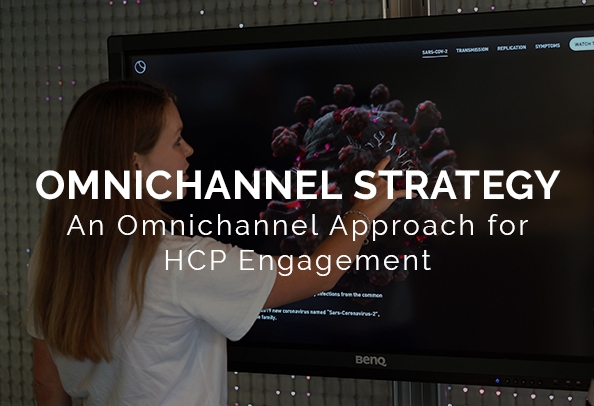Interactive Trends to Look Out For in 2022
The interactive industry and the hardware and software that support it are ever-changing and advancing. Keeping up to speed with these changes gives you the advantage of being at the forefront of exciting new trends. Interactive content is becoming increasingly popular as people seek more immersive experiences and higher quality, engaging displays.
Interactive, eye-catching content is essential in a society where digital marketing is becoming increasingly competitive, creating a world where you have to work harder than ever to grab your audience’s attention and keep it…
Our interactive experts are constantly researching and exploring the latest software and technology in the interactive field to keep our experiences impactful and state-of-the-art. Let’s explore them…
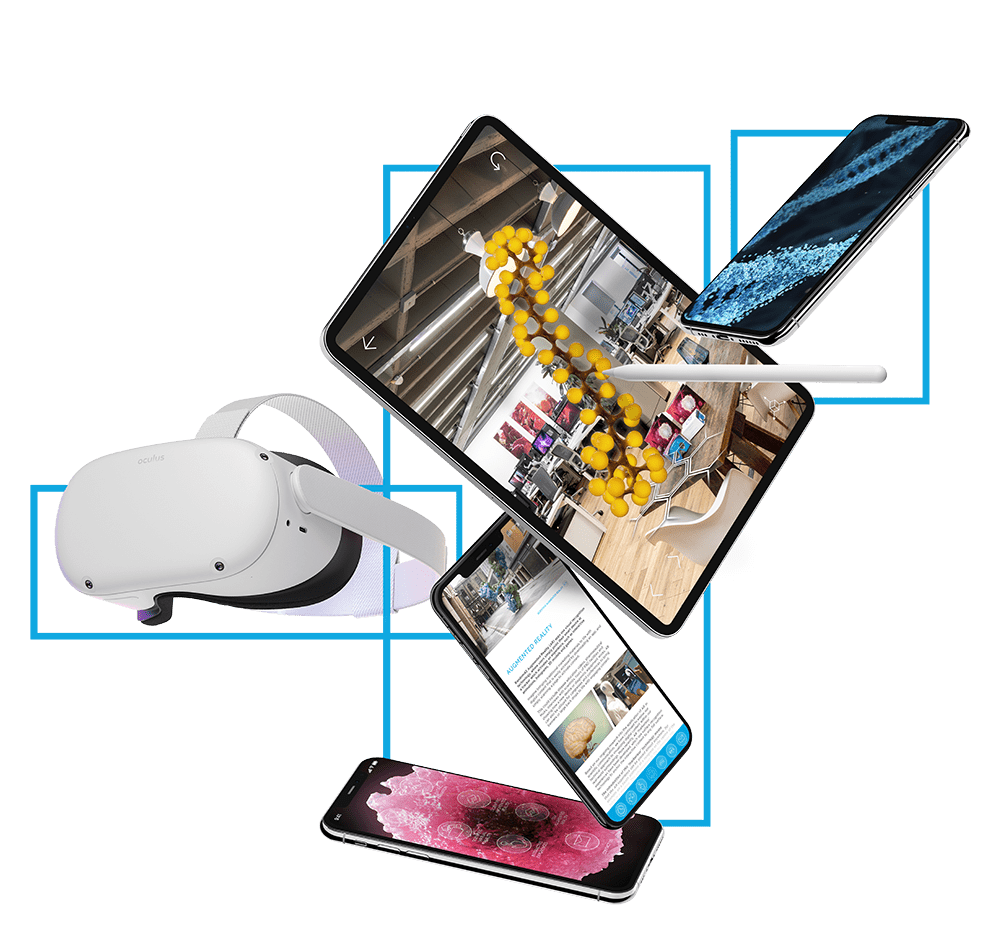
Interactive Trends of 2022:
1. 3D Interactive Web Apps 2. Web-based Augmented Reality 3. The Metaverse 4. Quest 2 5. Virtual Reality in the workplace 6. Virtual Reality Headset Cleaners 7. Pushing to new limits with High-end Devices 8. Volumetric DisplaysA web application is an app that runs on a web server rather than running locally on the operating system of a device. Web apps are designed to be used through a web browser, bypassing the need to install apps. This makes web-apps ideal for reaching a broad audience.
During the pandemic, 3D interactive web apps became increasingly popular due to their ability to be accessed by anyone, anywhere, at any time. As long as the user has an internet connection, the app can be accessed 24/7. Throughout the pandemic, travel was hugely impacted, with in-person meetings and events halted. This created a surge in demand for online content that boosted the popularity of web applications.
This demand remains high, especially in the hybrid world we now live in, with businesses still pushing for web apps due to their improved efficiency and accessibility, and the fact they can be customized and scaled over time.
Web-based Augmented Reality (WebAR) is a relatively new technology that does not require a mobile application to operate. This allows users to access augmented reality (AR) experiences instantly over the web without installing anything, meaning they can be experienced from your smartphone or tablet’s web browser.
Up until recently, WebAR was only possible using printed QR codes to provide AR tracking, an obvious barrier to accessibility. A new technological advancement by 8th Wall makes this requirement a thing of the past. 8th Wall delivers technology that allows mobile web apps to track any flat surface allowing 3D content to be easily placed. Random42 has been using 8th Wall over the past couple of years to deliver high-quality WebAR. Companies in the consumer space such as Nike and Coca-Cola have also selected the technology for their instant AR experiences.
WebAR is great for reaching a wide audience, removing the hassle of imposing a user or customer to download a mobile app, which is a plus for users who are cautious about filling up their device with single-use apps. The ability to go app-less and avoid downloads is enticing to many companies.
As promising as WebAR sounds, it is still a primitive technology that is just beginning to take off in the industry. This means that developments are still needed to make sure that WebAR is as user-friendly as can be and experiences are of the highest visual fidelity. Working with WebAR is currently more difficult than working with Native AR (Native AR app means the application is designed to run directly on the device and make full use of the hardware’s performance) and producing high-fidelity graphics isn’t straightforward.
Advancements within WebAR are working towards a more seamless experience for developers as well as users. At present, the main obstacle in delivering WebAR is a lack of developer tools. Whilst developers working on native apps can leverage existing frameworks such as Unity3D and Unreal a lot more needs to be created “from scratch” for WebAR. This can make the “cost-benefit” of going with WebAR a nuanced decision. The limitations of WebAR 3D rendering capabilities and reduced fidelity in visuals are something that we hope will be addressed soon so WebAR can be taken to greater levels.
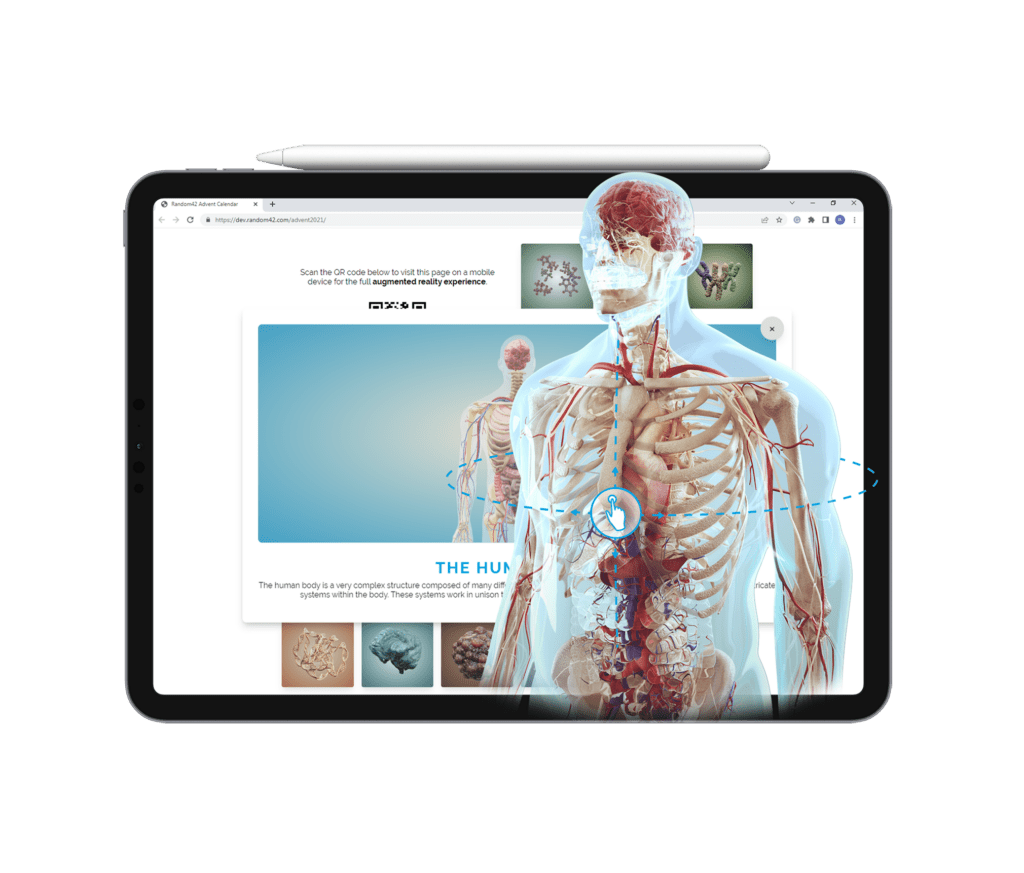
The “metaverse” is a concept that everyone is talking about at the moment. Broadly speaking, the metaverse is a network of 3D virtual worlds where users can interact and experience things as they would in the real world. The metaverse is renowned as the next evolution of social connection.
The metaverse uses AR and VR technologies to simulate a digital environment, along with concepts from social media, to create spaces for rich user interaction. Many technologists strive to take this technology beyond the real-world creating impossible experiences, a type of “hyper-reality”.
The emphasis on connecting users in such virtual worlds is groundbreaking and will really take user experiences to new levels. A notable attempt to build the metaverse is Meta’s (formally Facebook) Horizon Worlds.
In the pharma industry, this sort of approach was first seen during the pandemic when conference booths were recreated online in replace of in-person events. Interactive technologies, such as virtual reality, can really bring scientific concepts to life, allowing users to “enter” new worlds that show drugs and diseases within the human body, making visualization and understanding something that can be explored in innovative ways. The metaverse is the gateway for taking scientific communication to new heights and is something that has the potential to advance the way we learn in the pharmaceutical and healthcare industries.
At present, the virtual universe that is the metaverse still has some barriers, but the concept has so much potential and will bring many opportunities to the pharma and many other industries.
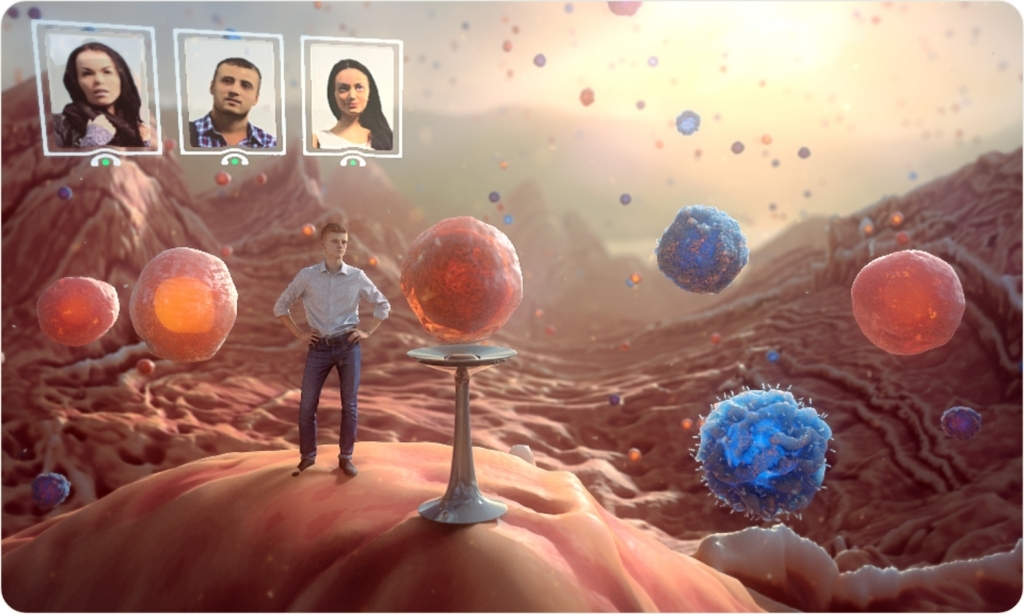
The Quest 2 is Meta’s (formerly Oculus’) most recent VR headset, offering an advanced processor and the highest resolution display yet. This headset provides a seamless and fun experience for users and its “all-in-one” setup means it is wireless, portable, and easy to set up.
Since its release at the end of 2020, Quest 2 headsets have been selling successfully and generating a lot of interest for VR in the consumer space. The widespread popularity of these headsets has boosted awareness of VR and has helped to put VR on the radar for many companies.
For us, this hardware will advance our VR projects with its high-resolution display and mighty-fast processor.
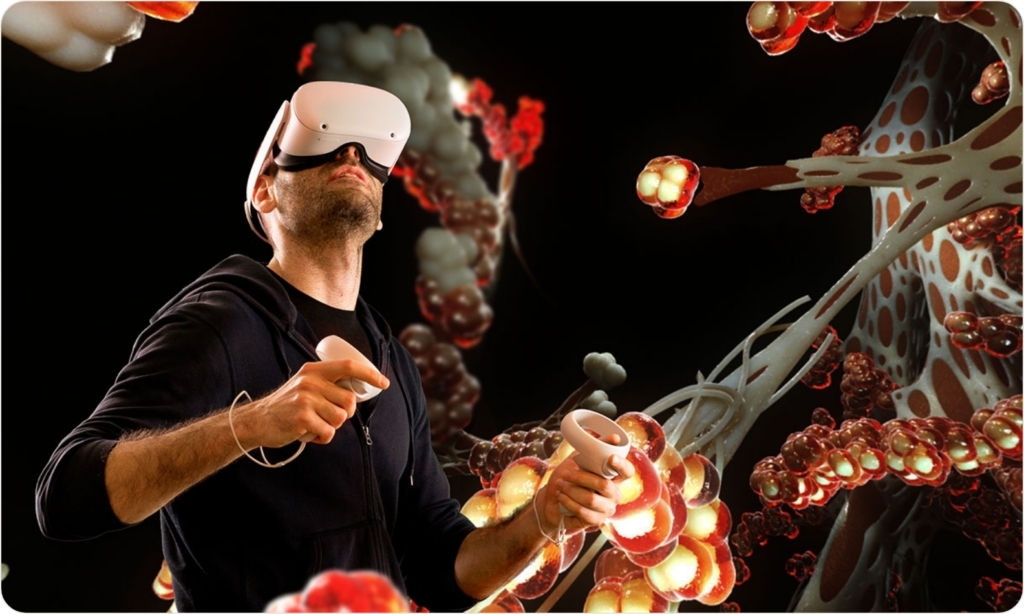
As innovation increases and VR technology advances becoming more affordable, efficient, and easy to use, it is no surprise that we are seeing VR being successfully utilized in the workplace more and more.
Many people assume VR is something that is exclusive to the gaming industry. Although this may well have been true at first, the focus of VR is now shifting to use by businesses throughout the workplace. Tech giants, Microsoft and Meta, are pushing the use of VR more in the workplace, with workplace VR as part of their long-term goals for the technology.
VR for the workplace can offer businesses an exciting new method to aid sales, training, education, meetings, and communication. By transporting the user into a digital environment, learning and interactions can be thought-provoking as well as engaging. VR is a way to get across key information and ideas in an enjoyable yet memorable way.
As more companies test out innovative VR technology and tech giants encourage experimentation we are excited to see how VR can increase productivity in the workplace and shape the future of upskilling teams.
Hygiene in the workplace is now top of the agenda. The COVID-19 pandemic really has brought to light the need for better cleaning practices in our daily lives, as well as in the workplace. Virtual reality headsets are something that were a cause of concern, especially at events and booths, where sharing a communal headset was a big no.
Sanitizing systems have since been created to thoroughly clean VR equipment quickly and easily. Cleaning sets that use UV to disinfect headsets and kill bacteria and viruses between one session and another are being widely adopted to keep VR safe, especially at events where equipment is shared. This reassures businesses that VR is viable for use at a large scale within teams and at events.
Next-generation devices and high-end technologies are breaking previous limitations faced when it comes to animations and interactive experiences. Software companies like Epic and Unity are pushing the boundaries of what is possible on high-end devices, while hardware manufacturers like Nvidia are creating increasingly powerful Graphics Processing Units (GPUs). These advancements have resulted in huge developments in the quality of what can be produced, with higher-quality animations and experiences becoming the standard.

The availability of high-end devices has allowed us to push to new limits. At Random42, we recently released an educational animation, COVID-19 Infection and Vaccine Development, which was created in Unreal Engine, an advanced real-time 3D creation tool from Epic Games.
This was created due to Random42 receiving an Epic MegaGrant, which was used to enhance our medical animation and interactive capabilities. With this rare opportunity, our team could develop a new real-time approach to our animations that has expanded the possibilities of what we can achieve creatively.
This project allowed our team to experiment with new concepts that we hope to incorporate into our pipeline. The future possibilities of our animations and interactive experiences will be greatly enhanced by the latest high-end devices we are seeing emerge in the digital world.
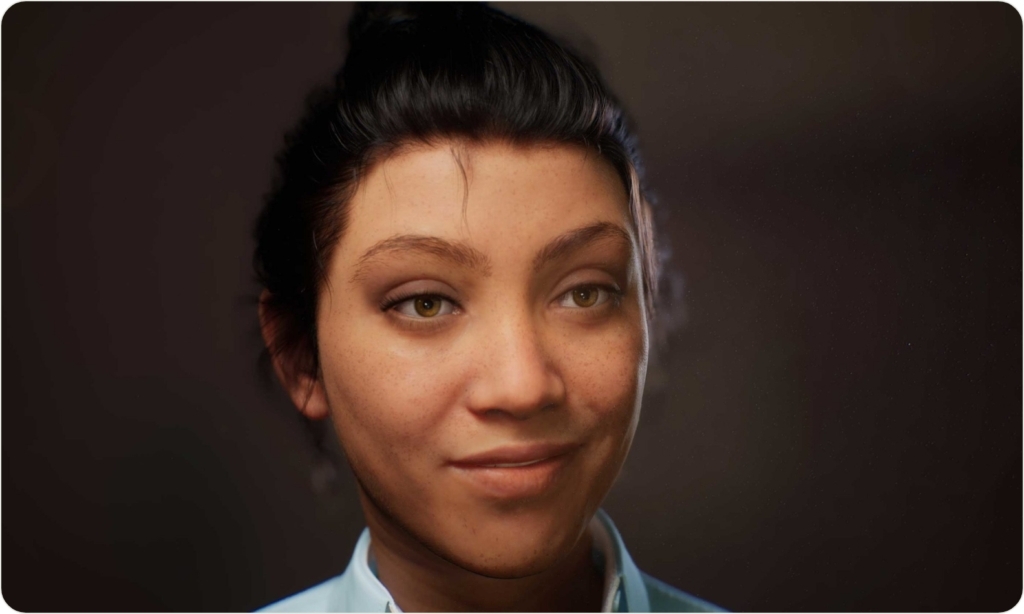
Volumetric displays create visual representations of objects in three dimensions. Unlike traditional 3D movies, which only show the 3D content from a single perspective, volumetric displays allow viewing from any angle in real-time. These 3D displays are visible to the unaided eye, meaning they do not require any special headsets, glasses, or illusions. Volumetric displays can also display interactive content by incorporating joysticks or other control methods.
As the viewer moves, the image also changes, creating a fluid visual experience. Volumetric displays are becoming more popular, especially at industry tradeshows and events. Compared to other 3D visualization tools, such as virtual reality (VR), volumetric displays offer a more social experience. The mode of interaction with a volumetric display means a group of people can naturally gather around the exhibit. Without having to put on headsets or glasses, these displays create opportunities for people to talk about what they see in real-time, generating discussion. This is a huge benefit for conference booths, where pharma companies are always on the lookout for innovative experiences that increase footfall and engage spectators.
Interactive Volumetric Displays
Looking Glass is a volumetric display that offers impressive ultra-realistic 8K resolution displays that are four times higher than HD. This technology produces holograms that are “larger than life”, at an impressive 32”, leveraging deep integrations with Unity, Unreal, and a variety of other 3D pipelines.
Voxon technology creates 3D “objects” that do not reside on a screen but physically exist with a volume or 3D space. Instead, Voxon uses millions of points of light to create fully interactive digital holograms that can be viewed from any angle. These displays are designed to form the showpiece of an interactive experience, where conversation and ideas can be shared amongst viewers.
We are excited to create more volumetric displays for our clients. These displays present a revolutionary approach to digital content and offer an exciting way of communicating and learning collaboratively.
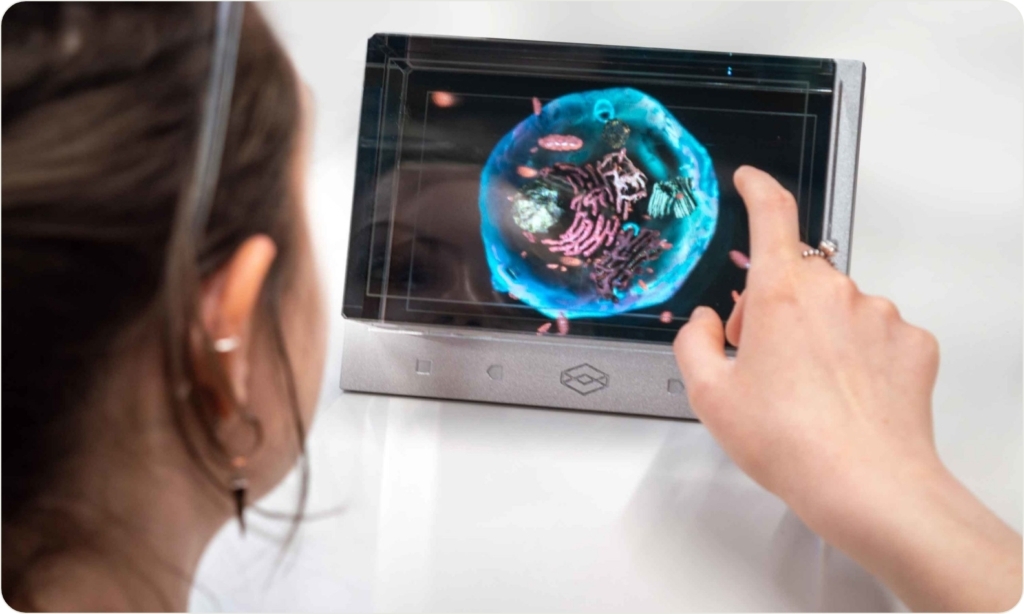
Are you interested in seeing how medical animation can help you?
Related news

Emerging Trends in Medical Animation
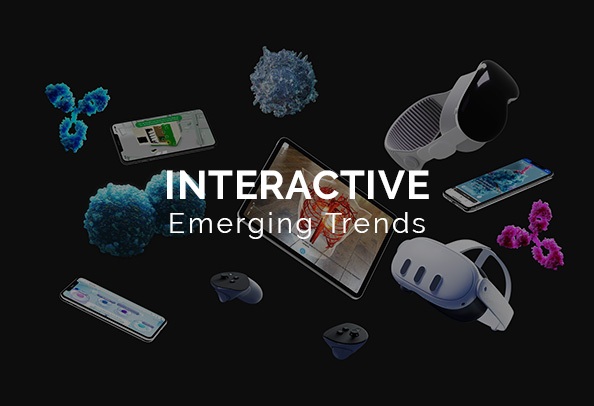
Emerging Interactive Trends
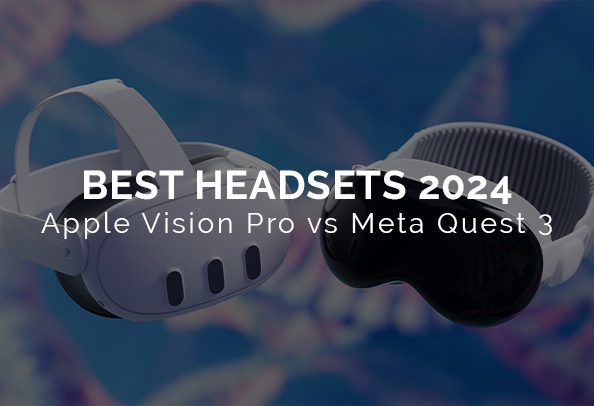
Best Headsets of 2024
